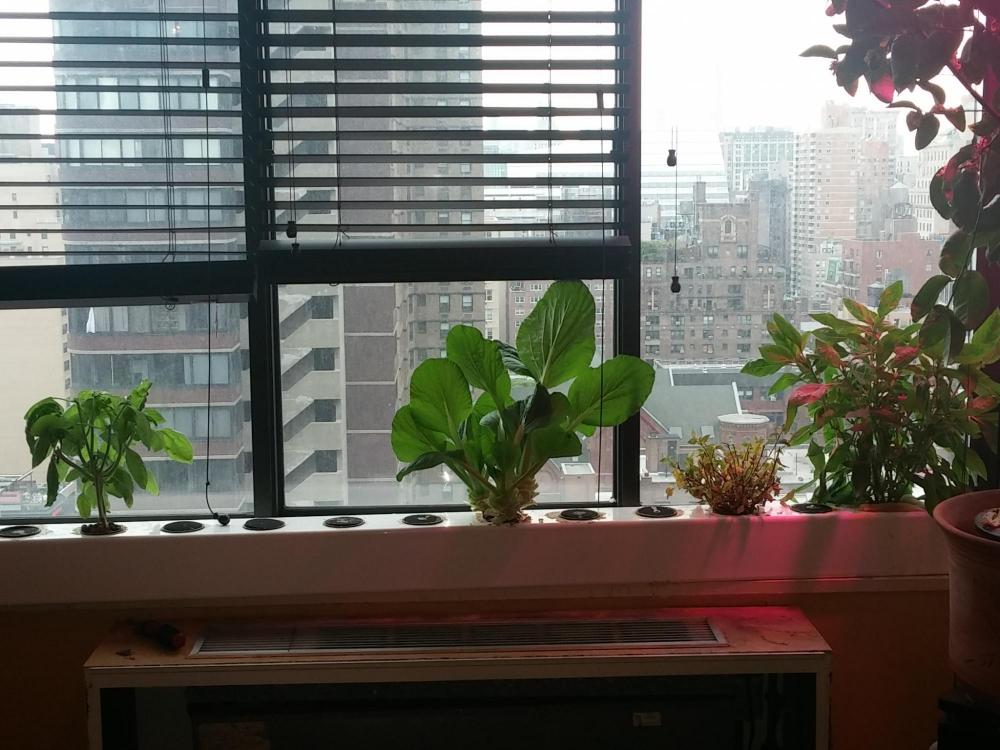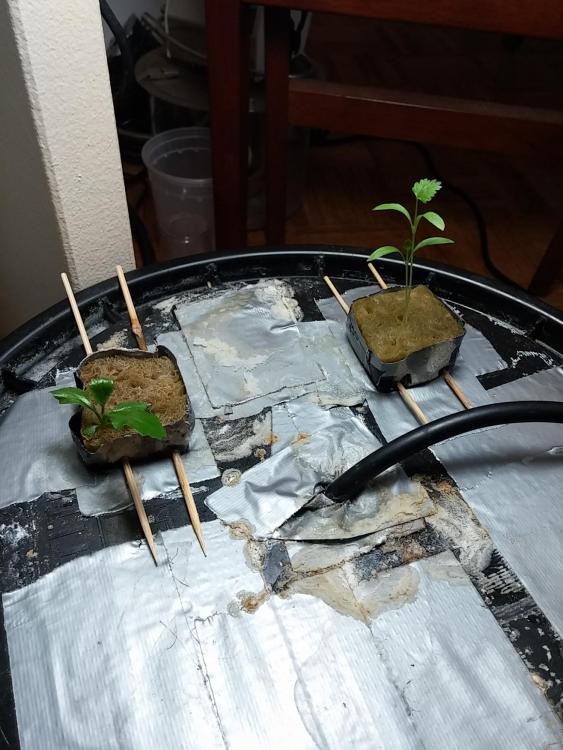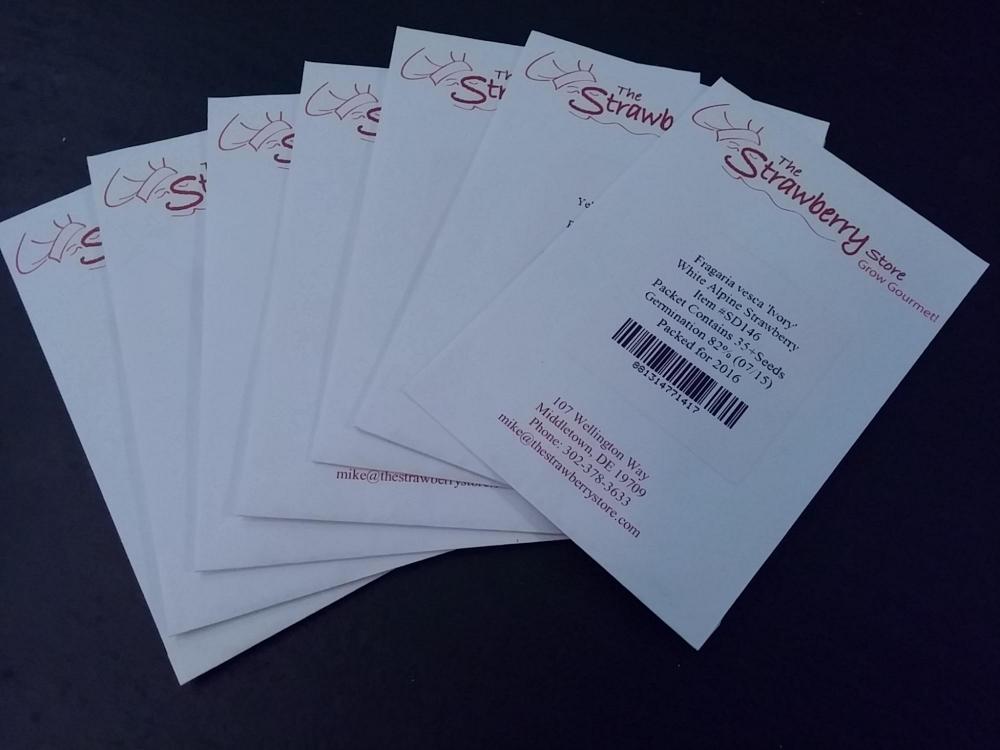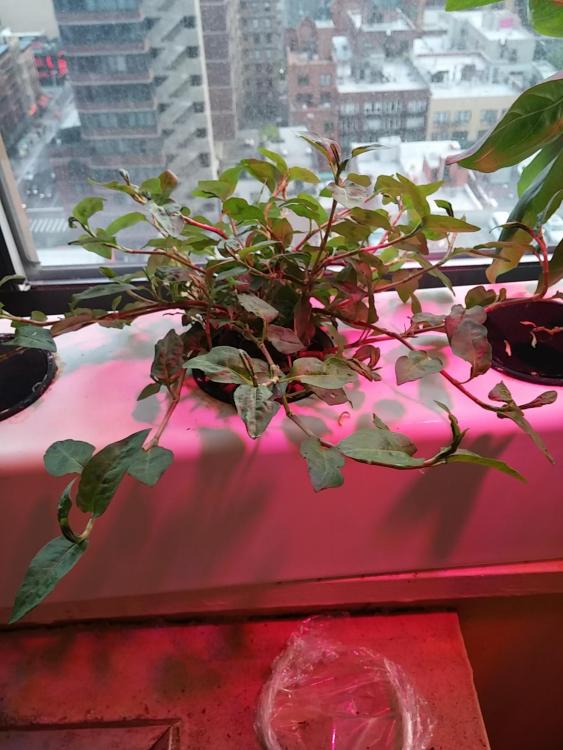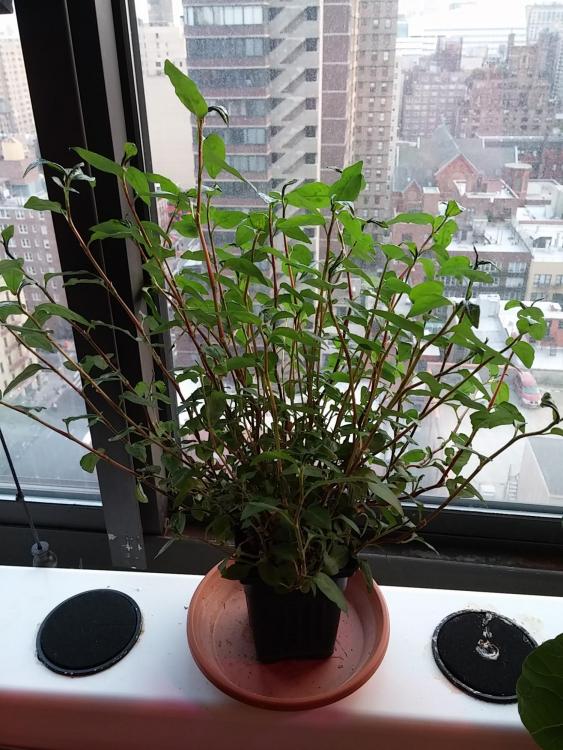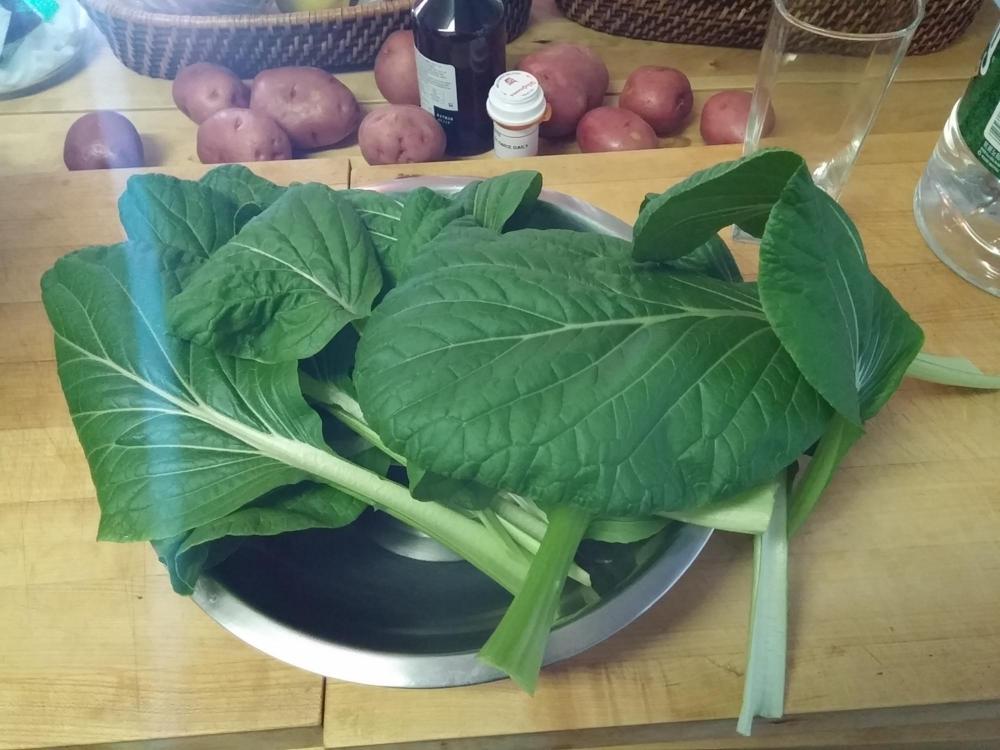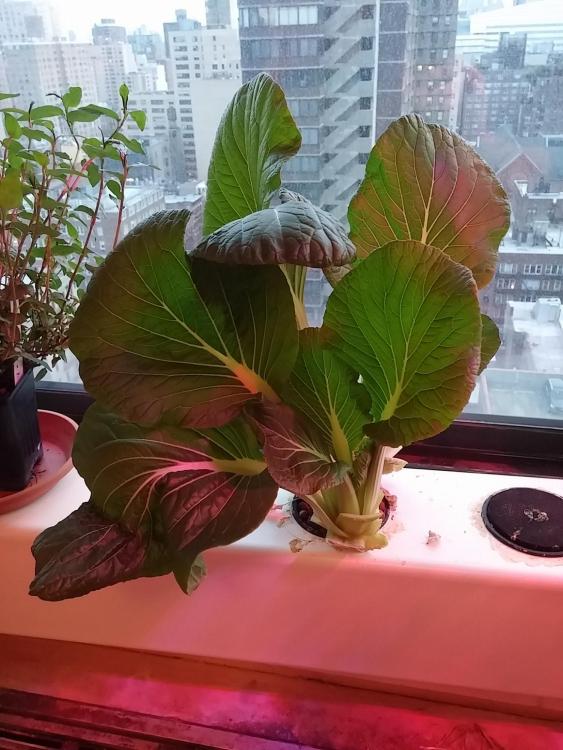
KennethT
participating member-
Posts
6,941 -
Joined
-
Last visited
Content Type
Profiles
Forums
Store
Help Articles
Everything posted by KennethT
-
@Shelby I echo the others in how sorry I am to hear about this. But you're right - if the root systems are intact (and not drowned), it is definitely possible for the plants to survive - although they will be significantly delayed - so you may have problems just because harvest time may be too late. A few years ago, I did an experiment with my tomato plant - it had grown huge and took over a whole corner of the apartment, and I cut it all down, but kept the system running - a few days later,a new header popped out of the "soil" and started a new tomato plant... sometimes, life finds a way. I'm glad no one was hurt.
-
Indoor strawberry experiment, Phase 1: Otherwise known as "how to turn your living room/dining room into uninhabitable living space"....
-
@ElainaA If you have lots of garlic, one thing to do that is very tasty is to mince and then fry it. Drain well on paper towels, and then keep it in a tupperware with a couple of desiccant packs wrapped in a paper towel (so the packs don't touch the food). That way, it stays nice and crispy for a long time. Sprinkling it on top can make almost anything taste better! Host's note: the gardening conversation continues here.
-
@Spork I don't usually use the gradient method for meat - I use it for some fish, typically salmon. My wife and I prefer our salmon pretty rare in the middle (I shoot for a core temp of 102F); at this point it flakes, but is incredibly moist and succulent. But, having that texture, consistently edge to edge, is not that appealing, plus, it's very delicate and hard to move without breaking into pieces. So, I set my bath temp to 115, and go for a core temp of 102. 115F is still not overcooked, but has a little resistance - plus, I torch it to get some color which adds a little bite to the outside as well. Doing it this way also has the added benefit of dramatically speeding up the process, especially on a thicker piece of salmon, which we prefer. Some people, not necessarily me, get a little 'weirded-out' when they see meat that is very uniformly rare - they feel it is unnatural. So, if I was having people over for dinner, and knew I had people like that in the bunch, I could cook their portions separately (in advance) with a gradient and label the bag. That way everyone is happy, and it's very little extra effort on my part.
-
Rather than using tables in Word, I would tend to put this type of information into a spreadsheet, where it is more easily regrouped. So, using your example, I would put Meat, Thickness, Seasoning, Temp, Time, Finish and Conclusion in the top row, and fill entries below it. I would also add the date.
-
Thanks btbyrd... I didn't realize the polyscience bought it. I just checked it out - it's now $4.99 - half price for when I bought it for $10 on the iOS app store years ago... but even at $10, it's still a bargain for how much I use it.
-
I love Sous Vide Dash, and use it regularly. It is especially useful for doing gradient cooking - using a bath temperature that is higher than your target core temperature. The developer, an eGullet member Vengroff who doesn't seem to be active lately, did a kickstarter campaign a while back for an automated knob for a range hob that could be used for sous vide, simmering, beer brewing, etc., on the stove top, but the company was absorbed by a larger appliance manufacturer, and dropped the kickstarter.
-
I'd be afraid that the butter would burn by the time the sugar caramelizes.
-
So as much as I like my hydro window garden trough, I have to admit that it has a certain flaw. It is definitely not meant to grow many different types of plants - especially those species that are more or less invasive. Pictured below is the trough with only 4 types of plants - so far (the two types of cilantro are almost ready to join them). From the left is Genovese Basil ( recently harvested), yu choi (harvested about once a week), rau ram (trimmed just this afternoon) and thai basil (in need of a haircut). The problem is that the rau ram roots extend from the plant, weave their way through the yu choi roots, and extend all the way to the genovese basil on the left! It's not a big deal right now as I don't harvest any of the plants completely, but if I ever wanted to, or wanted to remove a plant, it would be practically impossible without damaging the other roots.
-
Cilantro doesn't like heat, and bolts when it gets to hot. Try some shade cloth (or put it in a pot and grow it in a windowsill in the AC!).... also, you can seek out slow bolting varieties -I haven't tried them, but have heard positive results.
-
I love percebes... we had them in Northern Spain simply grilled... delicious! Thanks for posting! If you have the time, keep it coming!
-
-
@HungryChris That's pretty cool! If you find you still need taller stakes (indeterminate tomatoes can grow to be 30 feet long if the season is long enough!) you can do what professional greenhouse growers do and put a heavy stake at each end of the row, then run a cable about 10 feet off the ground from stake to stake. Then, from the cable, you hang these guys: http://www.growerssupply.com/farm/supplies/prod1;gs_fasteners_plant_supports_2;pg110013.html As the tomato plant grows, you clip it to the string. When the plant gets to be as tall as the cable, you let some string out so the plant leans. Over time, the majority of the plant will be growing sideways, and only the top 5 feet or so grow up. As the older leaves yellow and die, just prune them off - but you should get tomatoes along the entire vine.
-
-
@huiray Thanks for rubbing salt in my wounds!!! Actually, in Manhattan, there are very few Vietnamese restaurants... I gather there are more in parts of Queens and Brooklyn, but it would take much too long for me to get there and back to do any regular shopping there. It takes way too long for me to get to Manhattan's Chinatown for regular purchases for that matter! But, as you've shown, rau ram roots very very easily.... very nice!
-
Here's some updated pics of my Rau Ram plant.... Here is the hydro clone (that's been given a haircut several times): And here's the mother, that's kind-of growing in soil... I say kind-of because it has long outgrown the pot in which it is planted, but I've been feeding it some hydro nutrient liquid every day, so the soil it's in is just acting like a root substrate, but not actually contributing anything
-
Here's this evening's yu choi harvest (cooked about 10 minutes after harvest): and here's what is still growing:
-
@Paul Bacino I just planted some Vietnamese perilla - which is similar to the Japanese shiso. It's good with a mixture of other herbs - try using it with thai basil, garlic chives and sawtooth coriander. You can take virtually any protein, add the herbs, and maybe some rice noodles and make a lettuce wrap (even better if you use mustard greens) and then dip in some fish sauce mixed with lime juice and some chilis... simple and delicious. Also good in salads.
-
If it was legal, I would certainly convert a 2nd bedroom into a grow room - it would pay for itself and then some... but right now, in New York State, it's certainly not legal and while, chances are, I would never get caught, I'd rather not wind up in jail for any length of time. I'd be someone's bitch in about 20 minutes. But, I do love growing herbs and veggies hydroponically, and the pot growers are on the forefront of the technology!
-
A lot of the modern stuff is hydroponic. But even if you grow in soil, there are tons of fertilizer additives you can use to increase flavor or aromatics in veggies or herbs, but increases potency of cannibis also. Most of these additives temporarily shock the plant into thinking it's dying, so it puts out tons of fruit or flowers, then you take the additive away, and give it tons of nutrient so they all get to maturity. Not only does it increase flavor but it also greatly increases yield.
-
To me, the berries look like pink peppercorns (which are not true peppercorns at all)... here's a crappy shot of that plant - it seems to look similar? https://en.wikipedia.org/wiki/Schinus_molle
-
NYTimes Articles on Food, Drink, Culinary Culture 2013–
KennethT replied to a topic in Food Media & Arts
And now, the NY Times is getting into the food delivery business themselves!!!! http://www.bloomberg.com/news/articles/2016-05-05/new-york-times-to-start-delivering-meal-kits-to-your-home -
@JoNorvelleWalker Sorry - you are completely correct... I had gotten myself confused - it's the difference in temperatures that is to the fourth power, not the distance...
-
Is it possible to move the rack with the tiles closer to the top of the pizza? Infrared radiation (which is what is coming off the tiles to heat from the top) decreases by the distance to the fourth power, so the closer you can get it to the top of the pizza, the more effective it will be. If it's too far away, it's almost like it's not there at all.
-
I agree with Lisa - on my own tree, I've experienced limes turning almost a yellowish-green when they get very ripe (meaning I've left them on the tree too long!)



